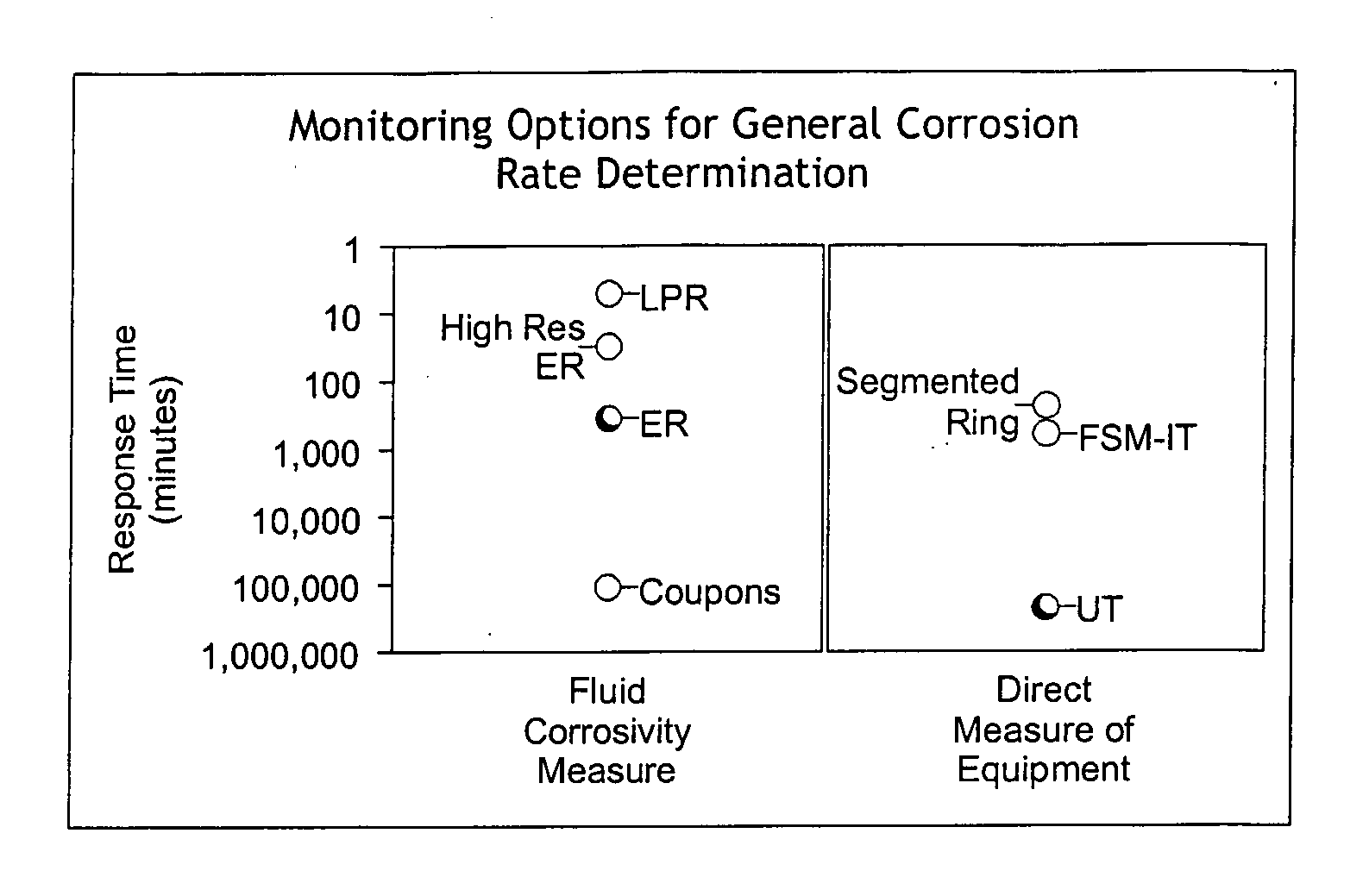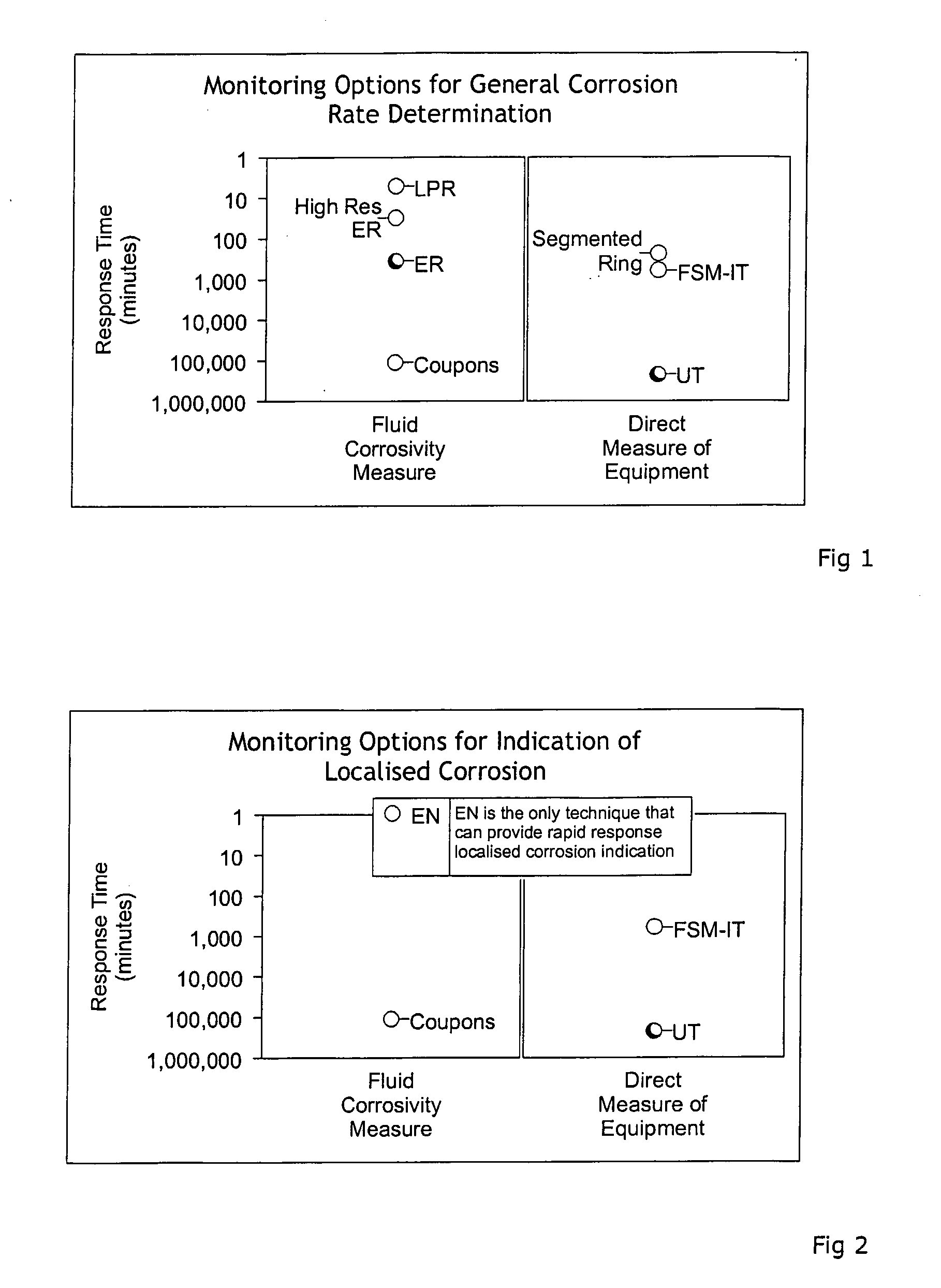Measurement Of Corrosivity
a corrosion monitoring and corrosivity technology, applied in instruments, borehole/well accessories, surveys, etc., can solve the problems of unsatisfactory inhibitor effectiveness, unsatisfactory downhole environment, and inability to measure the corrosivity of the well, so as to achieve greater corrosion protection measures and corrosion rate. the effect of higher ra
- Summary
- Abstract
- Description
- Claims
- Application Information
AI Technical Summary
Problems solved by technology
Method used
Image
Examples
Embodiment Construction
[0019] The present invention aims to overcome the disadvantages associated with current downhole corrosion monitoring techniques and to validate existing corrosion modelling software packages. This is achieved by utilizing a single downhole tool to perform linear polarization resistance (LPR) and electrochemical noise (EN) techniques. These techniques respond to the corrosivity of a fluid much more rapidly, as shown in FIGS. 1 and 2, and enable an operator to deploy the tool via wireline and to obtain real time data.
[0020] As compared to other techniques such as electrical resistance measurement (ER) and weight loss coupons, it can be seen that LPR and EN techniques offer a much shorter response time and are thus suited to development into a realtime monitor capable of reporting the corrosion rates along the length of a wellbore.
[0021] The tool, while initially moving, aims to passively monitor naturally occurring fluctuations in current and voltage so as not to affect the corrosi...
PUM
| Property | Measurement | Unit |
|---|---|---|
| voltages | aaaaa | aaaaa |
| corrosion rate | aaaaa | aaaaa |
| temperature | aaaaa | aaaaa |
Abstract
Description
Claims
Application Information
 Login to View More
Login to View More - R&D
- Intellectual Property
- Life Sciences
- Materials
- Tech Scout
- Unparalleled Data Quality
- Higher Quality Content
- 60% Fewer Hallucinations
Browse by: Latest US Patents, China's latest patents, Technical Efficacy Thesaurus, Application Domain, Technology Topic, Popular Technical Reports.
© 2025 PatSnap. All rights reserved.Legal|Privacy policy|Modern Slavery Act Transparency Statement|Sitemap|About US| Contact US: help@patsnap.com



